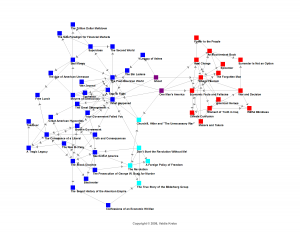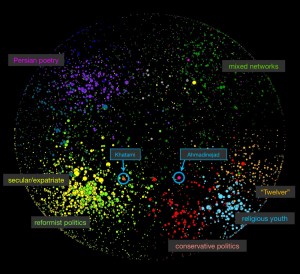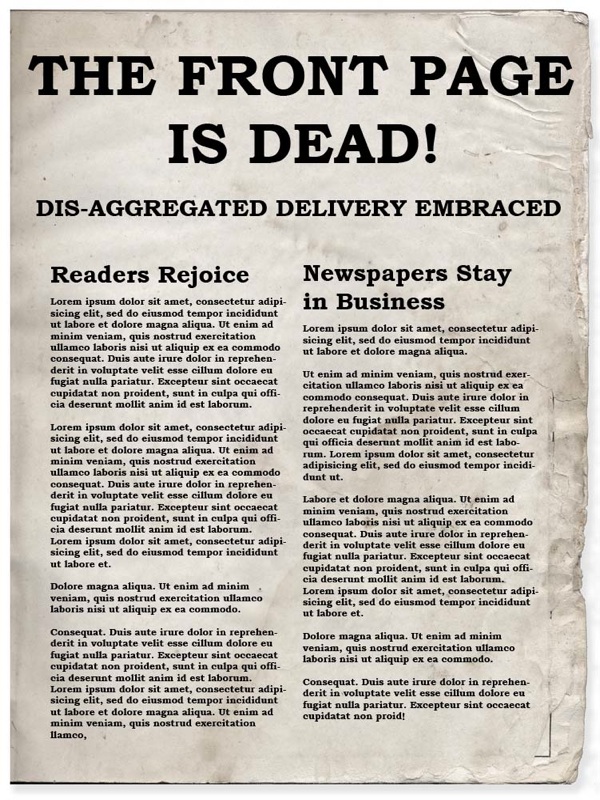How many journalists does the world need to adequately serve the public? It’s a difficult question, and I’m going to argue that the market won’t tell us. But here’s a thought: for the first time in history, it’s trivial to check how many outlets covered any particular story.
From Google News just now:
In this case, there were 2,907 articles on the web covering the story of Iran freeing the Brits. Even accounting for the fact that most of these pages will be mirrors of the same text, we can see that Aljazeera, The Telegraph, the Associated Press, CNN, the New York Times, and many others covered the story. And they all did their own reporting, a horde of journalists from all over the world making phone calls and doing interviews.
Meanwhile, written-word reporters are getting laid off right and left, essentially due to the end of the print-based information distribution monopolies. Last year, 35,000 journalists lost their jobs in the US. This has made a number of quite clever people fret about the end of “accountability journalism,” the press that keeps people honest by serving as a watchdog.
This talk between Clay Shirky and Alex Jones is a great introduction to the argument that we’re “losing the news,” to use Jones’ phrase.
But what the Google numbers suggest to me is that, if we really are losing the kind of journalism that is essential for democracy, it’s not because we have too few people. It’s because they’re doing the wrong things. According to people like Shirky and the Knight Foundation, local news in particular is vastly under-served.
I discussed this with a journalist from the International Herald Tribune yesterday. He raised the point that we definitely need more than one organization covering each story. Competition is important, as is a plurality of viewpoints — I think we really do want to preserve the difference between the CNN and Al Jazeera.
So the right number of newsrooms on each story is greater than one. But I bet it’s less then 10 or 20, which is what we have now. Sadly, I think this means that there is a currently a tremendous duplication of effort in the global news-gathering system.
The world’s journalists need to get better organized and stop wasting their efforts. Markets are very good at maximizing efficiency for all sorts of things, but I think this is a case where just letting the market strip apart newspapers until they’re profitable again (if ever) is unlikely to give us the right answer.
Journalism is, arguably, a public good in the economic sense. This means that everyone benefits from it, but everyone also shares it — you will tell your friends the hot news, which makes it difficult to charge for. It’s been understood for at least a century that a competitive market tends to produce too little of a public good. The only reason we had so many newspapers before the internet is that they had a monopoly on distribution. Presses and paper are expensive.
I am not arguing that newspapers need to be run as non-profits or government subsidized, as some people have (and it’s worth noting that the world-wide BBC operation runs on UK government money.) Personally I favor hybrid “social-venture” models that subsidize news through other means. I find Jay Rosen’s list of ways that the news has been subsidized in the past to be particularly enlightening.
It seems likely to me that the bare market is going to under-produce journalism, at least the general-interest public service sort of journalism (financial journalism is currently quite profitable, thank you very much.). If we believe this, and we are going to start designing models and policies to ensure that we get more, then the question of when we have enough needs to be asked in a serious, empirical way.
Counting story duplication isn’t a very complete answer to “how do we know when we have enough journalists?” but it’s a start.
What I really don’t know how to address is the question of how many stories should have been written, if only someone had been there to cover them.




